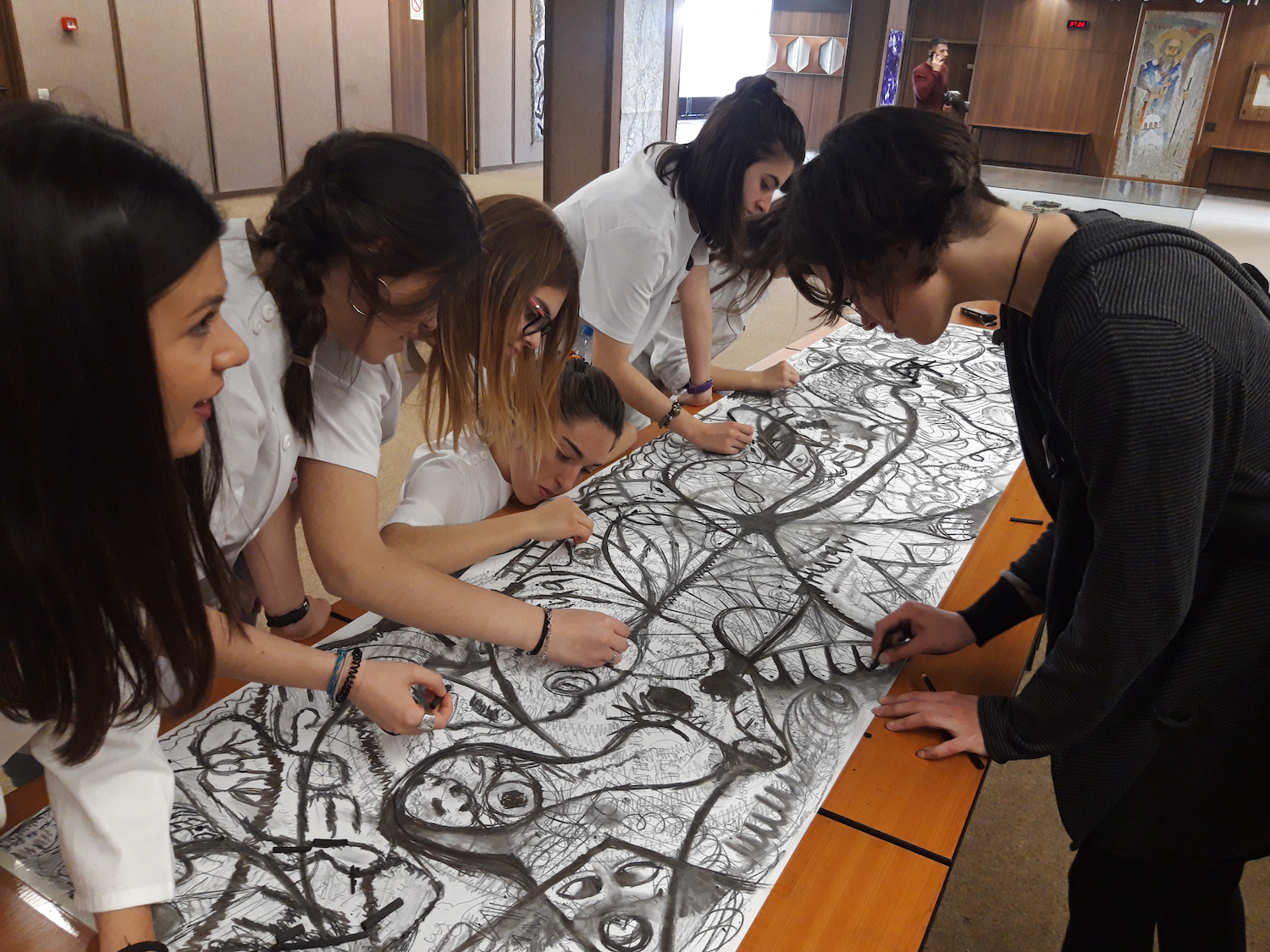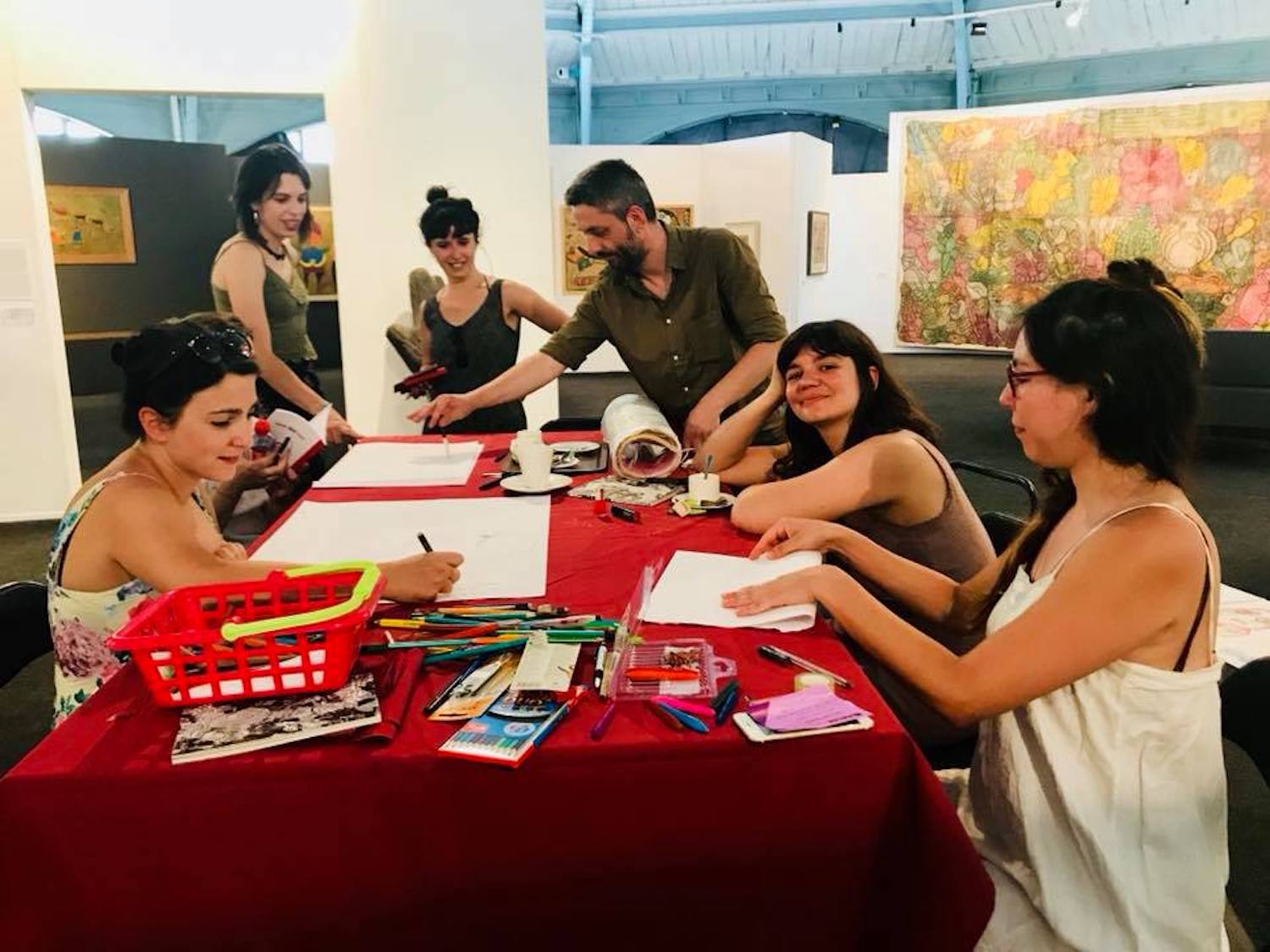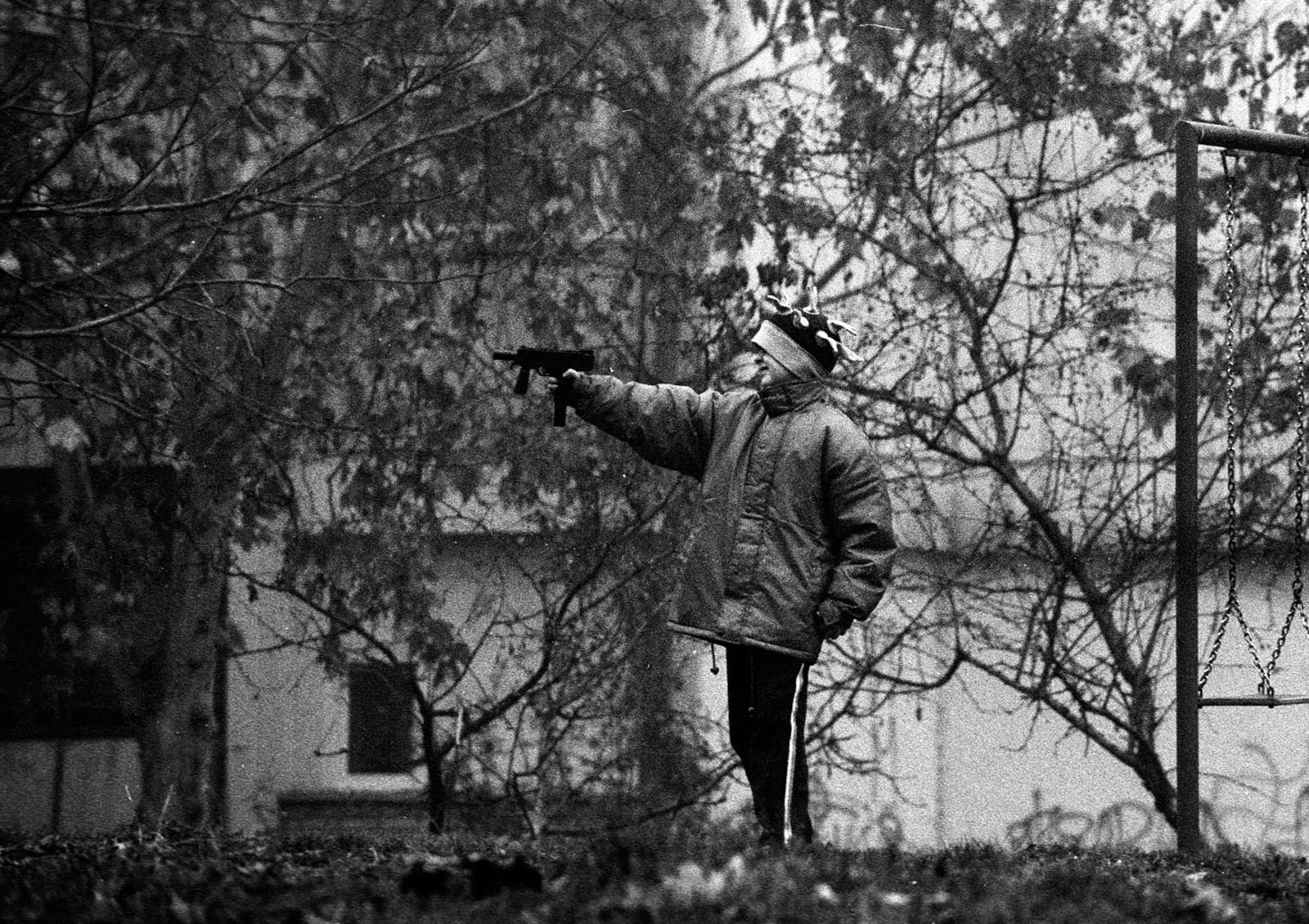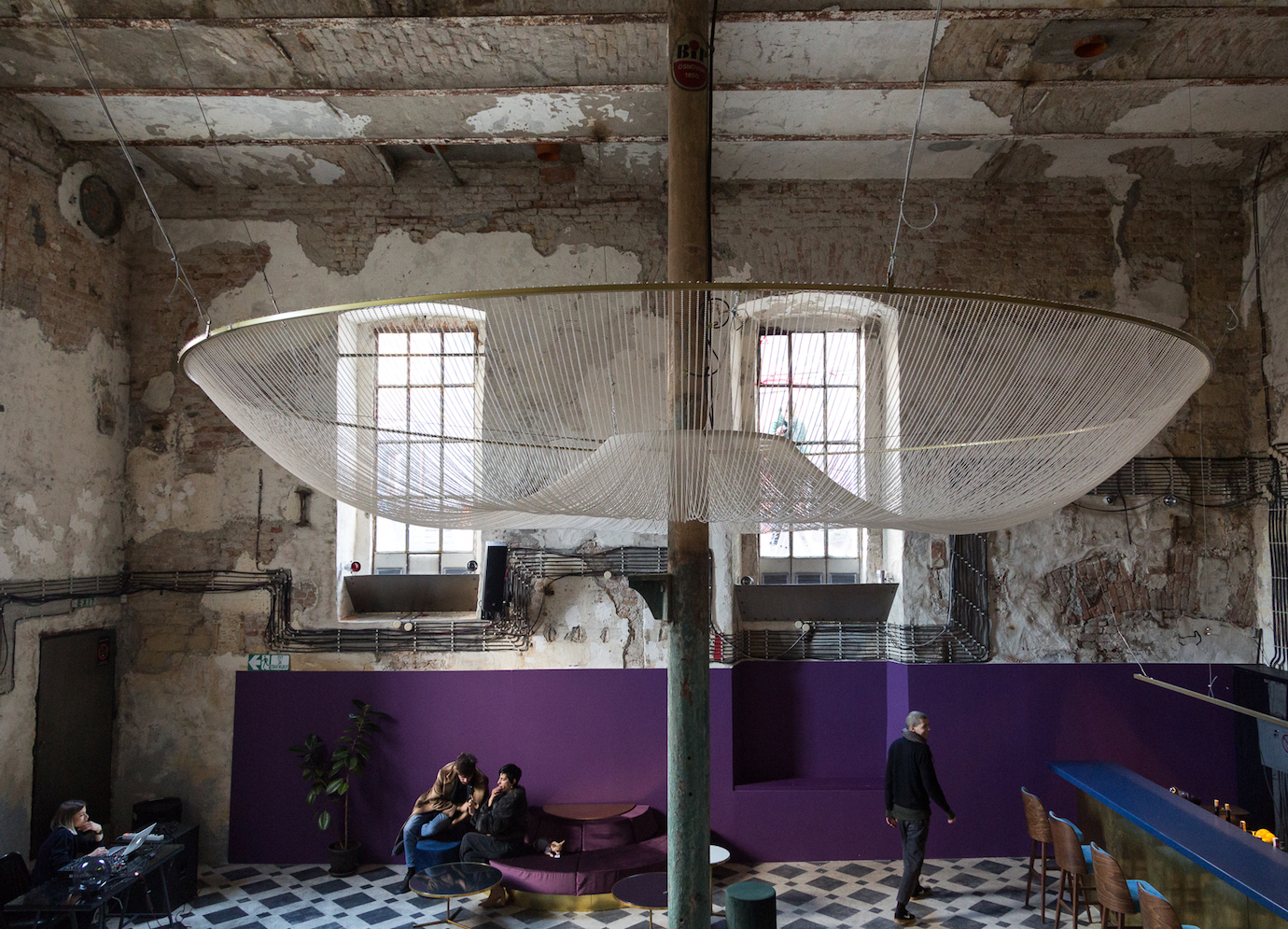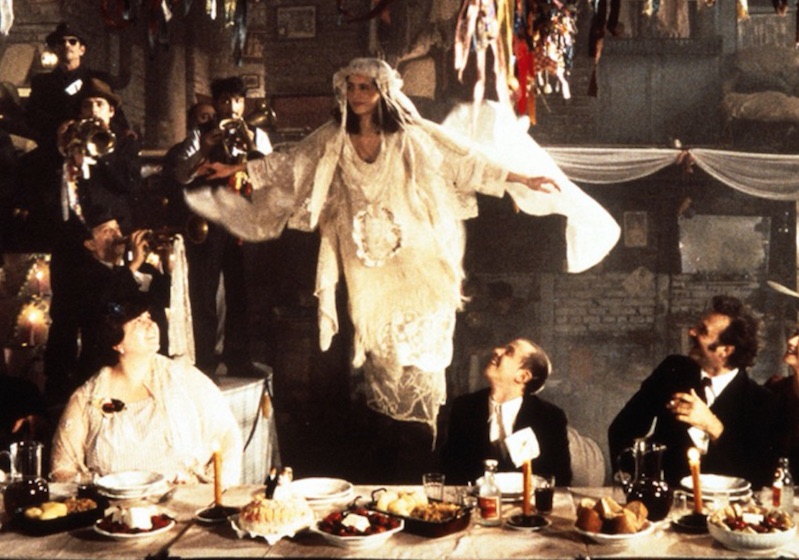‘We use art to cope with uncomfortable situations.’ The collective putting Serbia’s mental health crisis on canvas
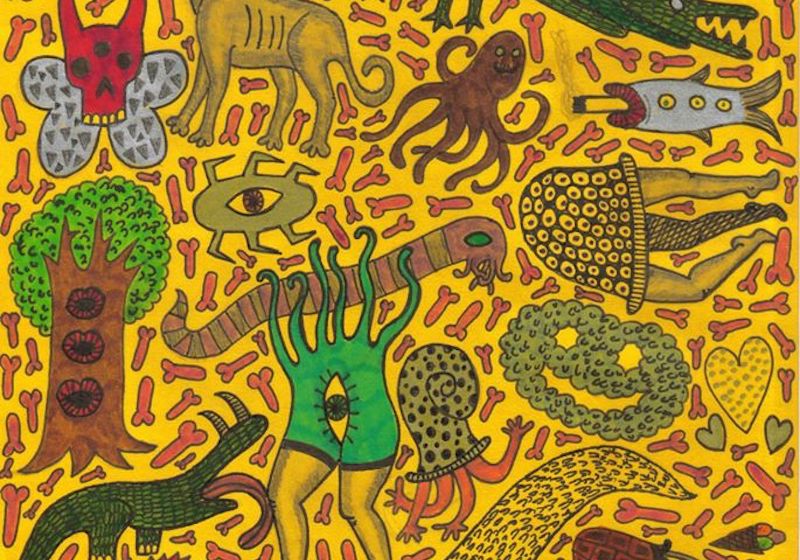
The Art Brut Serbia Association is using creativity to get those on the edge to open up on subjects still seen as taboo — including mental health and the isolation wrought by Covid-19.
Amid the ashes of the Second World War, French painter Jean Dubuffet set out to define a new kind of creativity: the art brut movement. This new cannon, he believed, was “created from solitude and from pure and authentic creative impulses” — rejecting aesthetic convention in order to translate the horrors of conflict into visual form. Dubuffet travelled a still war-torn Europe to collect artworks made by society’s most isolated individuals: prisoners, psychiatric patients, and other outsiders who found inspiration in seclusion.
Seventy years later, a group of outsider artists in Serbia are responding to another crisis in isolation: the Covid-19 pandemic. Officially called Art Brut Serbia Association (ABSA), the collective is made up of the country’s political and social outliers: marginalised people excluded from the mainstream art scene. This community of artists, many of whom struggle with their own mental health, have long been using the therapeutic power of art to reclaim their outsider status. Now, as the pandemic crests across the continent, with millions struggling with their own isolation, ABSA’s work has grown ever more urgent.
ABSA’s online presence was a little lifeline thrown out to the isolated — a place to connect and create when the real world had closed itself off.
Invoking Debuffet’s art brut is, in the words of ABSA founder Goran Stojčetović, a “Trojan horse” trick. The familiar art term acts as a friendly entry point in a country where questions of mental health are often taboo. Before the coronavirus crisis hit, the collective would run drawing workshops for Serbia’s most stigmatised groups — prisoners, psychiatric patients, and displaced people. They were welcomed into the collective alongside full-time artists, and ABSA showcased its members’ works on their popular Facebook page and in real-life exhibitions around the continent.
Now, things are different: workshops have been paused. The group’s latest exhibition at the Dom Sindikata concert hall in Belgrade won’t be seen by many. But ABSA’s community has been buoyed by the crisis: during the lockdown period in Serbia, members continued to connect by sharing their works on social media. Their online presence was a little lifeline thrown out to the isolated — a place to connect and create when the real world had closed itself off.
“Members were in contact throughout the lockdown period, and we were creating more than ever,” says Stojčetović. “Artisitistically, it was one of my most fruitful periods. I drew every day and ended up with over 50 works.”
Image: Brigitte Bardot, Goran Stojčetović
Group members are adept at channeling trauma into art: most have had to face the decades of political instability that has marred Serbia since the fall of Yugoslavia. After being displaced from his home in Kosovo due to the 1999 NATO bombings, Stojčetović and his family moved to Serbia as refugees. He eventually started working as an artist in Belgrade, where he met Bojan Đorđević, ABSA’s co-founder. Both were recovering from addiction and using free-expression art as a therapeutic outlet. They hoped to encourage more artists to work in this way, unrestrained by artistic conventions or social acceptability. In 2013, they began to bring more artist friends into their small but growing circle.
“In those days, I was living in an apartment that was passed through by a lot of artists,” says Katie Woznicki, an American expat and early collective member. “People associated with Art Brut would come over and draw for hours, sometimes days. I just kind of joined them — we shared a belief that so-called ‘primitive art’ is the real essence of creative expression, so it felt natural.”
The collective grew quickly, and by 2014, the founders officially registered the group as an association. By this time, ABSA was already organising workshops with displaced Kosovan children, as well as with young Serb and Romani people. In 2015, ABSA was invited to set up a clinic at the Military Medical Academy — a military hospital in Belgrade — and have been conducting workshops for PTSD-afflicted soldiers ever since.
For Stojčetović, politics and art are inextricable; that’s why the collective has always aimed to serve people impacted by war and institutional violence. “Political instability precipitates mental instability,” he says. “But I believe the human psyche has infinite possibility for change, and we can bring out the good by nurturing the creative impulse.”
The group’s exhibitions often document the trauma wrought by conflict in the region. For one project, Joint Guardian, ABSA collected and analysed artworks made during the NATO bombing of Yugoslavia; for another exhibition at Paris’ Halle Saint Pierre — called Turbulence in the Balkans — the group loaned 25 paintings and sculptures from Serbian artists, making it the largest group exhibition of Serbian art abroad for several decades. Despite this stunning achievement, it was largely ignored by Serbia’s pundit class.
“We still very much operate outside the official system,” says Stojčetović. “We have never been written up by Serbian art critics or historians, though we maintain strong relationships with gallerists who understand our mission.”
ABSA’s sidelining from Serbia’s mainstream art world could have to do with a culture of silence surrounding mental health. “As someone who went to rehab and spent time in a mental institution, I have noticed that it’s a taboo topic,” says Đorđević, ABSA’s co-founder. “People are ashamed and they suffer in solitude.”
Đorđević suffers from borderline personality disorder (BPD), which has greatly informed his work. While in lockdown, he had been busy at work on his chaotic, surreal drawings populated by strange creatures - a chicken-headed dog wearing stockings, say, or bare-breasted woman with giant lips for a head. He often experiences his BPD through enhanced emotions, and tries to harness that experience his work. “My characters represent my dreams, frustrations and sexual fetishes,” he says. “They move and dance in my mind.”
For Đorđević — who mostly works alone — the lockdown period wasn’t a massive departure from his day-to-day life. “When I left rehab four years ago, I was alone a lot, so I’ve learnt to treasure my solitude,” he says. Despite this, he’s been in constant contact with other ABSA members, who he counts as essential to his work as an artist. “We all learn and ‘steal’ from each other. It helps us grow as friends, people, and artists.”
“We’re good at using art to cope with uncomfortable situations. Our impulse to create will be what saves us.”
You can trace Đorđević’s influence in fellow member Woznicki’s colourful, Cubist-style characters, which she created whilst isolating in her apartment with her cat. Woznicki - who moved to Belgrade from Ohio several years ago — has long struggled with her mental health, but finding like-minded artists has helped her heal. “Without ABSA, I probably never would have drawn the way I do now,” she says. “They shaped my attitude about making art — namely, that art is something you do everywhere and as much as possible in order to reach something in yourself.”
Throughout her quarantine period, Woznicki’s drawings were shared both on her personal Instagram page and ASBA’s social media channels. She found inspiration within the “fishbowl” world of her apartment, employing the free-drawing technique she picked up from her peers. “Drawing for me is mostly an unconscious process,” she says. “I almost never know what I am going to draw until I see it on the page. I guess that’s why I like drawing, because there’s space for ambiguity.”
Image: Watermelon Man, Katie Woznicki
Now that Serbia is emerging from lockdown, group members will soon be able to meet again. But even though most institutions remain shuttered, the group is planning a large group show at the Museum of Contemporary Art Zagreb for when it reopens — a huge feat, since no major exhibition has been organised between Serbia and Croatia since the fall of Yugoslavia. “This is a hugely positive step in advancing relations between two nations who were enemies just 25 years ago,” says Stojčetović. “Art and politics are so intertwined — it’s the best way of traversing boundaries.”
And just as Dubuffet’s cadre channeled trauma into art, ASBA will continue to make sense of the pandemic through their practice. The group is hoping to relaunch workshops in early June, and plan to continue supporting each other from afar. “We’re good at using art to cope with uncomfortable situations,” says Woznicki. “Our impulse to create will be what saves us.”
